Editor’s Note: When Jonathan Cristaldi interviewed four restaurant owners about their paths from working the floor as sommeliers to owning their own restaurants, it was before COVID-19 severely changed the service industry landscape. If you work in the service industry, please view our List of Resources for Service Industry Workers, Restaurants, and Bars. Herein is Cristaldi’s article in its entirety, as well as the below information about how each restaurant featured in the article is handling the COVID-19 social-distancing mandates:
Compline, Napa, California is delivering locally from 11:30 a.m. to 8:30 p.m. Order at complinewine.com.
Protégé, Palo Alto, California: Follow Protégé on Instagram @PROTEGEPALOALTO for updates and reopening announcement. Also visit its website protegepaloalto.com.
Ungrafted, San Francisco, California is open Tuesday–Saturday from 2:00 p.m. to 5:00 p.m. for sale of retail bottles and to-go meals. To order visit ungraftedsf.com.
by Jonathan Cristaldi
Three stunning restaurants. Three scintillating wine lists. Three different paths toward success. One thing in common: Sommeliers own the restaurants. And, to our great fortune, these sommeliers spilled the beans to The SOMM Journal on how they made it happen for themselves. From attracting investors to overcoming adversity on opening day, to setting the table for success, these sommelier-turned-restaurant owners have hard-won wisdom to share.
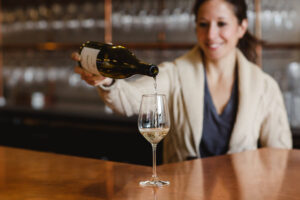
Q: How and when did you know you wanted to open your own restaurant?
Rebecca Fineman, MS. Restaurant: Ungrafted, San Francisco, CA: I got into the restaurant game slightly later in life than many of my peers and even my husband. I had been fully enmeshed in academia, with a slowly suffocating realization that my life would be a steady repetition of the same. I took a restaurant job as a means to pay my bills and provide a break from the monotony. For the longest time I wondered “Why would anyone want to do this as a fulltime career?” Ten years later Chris and I were doing what I never before understood . . . . We both worked so hard for so long, and we no longer wanted to give all of our energy and efforts to someone else, because it never felt fully appreciated. If Chris and I were going to stay in this business—which we very much wanted to—we were going to be the ones to call the shots.
Dennis Kelly, MS. Restaurant: Protégé, Palo Alto, CA: When I chose a career in the restaurant business, I knew that I would eventually need to own my own place in order to have the lifestyle that I wanted. From that point on, I made every career decision with the goal of positioning myself to start my own restaurant. I decided that gaining experience at The French Laundry and earning the Master Sommelier Diploma could put me in position to find the right chef/business partner, raise the necessary capital, and gain the knowledge required for success.
Matt Stamp, MS, and Ryan Stetins, Advanced Sommelier. Restaurant: Compline, Napa, CA: We wanted to create a wine bar that had the wines we wanted to drink and the type of service we wanted to experience. We wanted to add something new and unpretentious to the Napa scene—a wine bar and restaurant culture infused with discovery, excitement, and professional service. We are excited to share wines from our neighborhood and from the larger world with everyone that walks through our door.
Q: How long did you work the floor in other restaurants before owning your own? Were you working the floor right up until the final leap, or did you have to take some time off to turn your dream into a reality?
MS and RS: Opening Compline took over three years from the conception of the idea to opening day. We continued to work our “real” jobs during most of this time—meaning that all of the time spent articulating the concept, securing investment, and creating the business had to occur around 50-plus hour workweeks. We finally both left our other positions—Ryan as General Manager of Redd Wood [in Yountville, California]; Matt as Education Director of Guildsomm—once buildout started, seven months before we opened. We leased a shell of a building and had to do everything (plumbing, electrical, heating and air, kitchen design) ourselves, so we freed ourselves up to be on site with our contractor daily.
Between the two of us, we have about 30 years in total of restaurant experience, in just about every position, from the kitchen to the wine cellar to the dining room.
RF: After I broke from the easy path before me in academia, I climbed the restaurant ladder for a decade from server to beverage director. I passed a series of wine certifications culminating in the Master Sommelier title . . . . We did not take a break before opening our own restaurant. There are bills to pay that don’t go away. We worked in restaurants, consulted, and did teaching all the way up until the day we opened our own doors.
DK: My first Sommelier role was the Head Sommelier position at The French Laundry. I discovered my passion for wine in 2005 while taking the CMS Introductory course/exam. I passed the Certified and Advanced exams in 2006 and 2007, and was promoted from Captain to Head Sommelier in 2008. After passing the Master Sommelier exam in 2012, I wrote the business plan for Protégé and left The French Laundry in 2015 to begin the process of opening the restaurant. Although we projected a 2016 launch, it took us nearly 3 years to wade through unforeseen zoning and construction delays before finally opening our doors at Protégé in March of 2018.
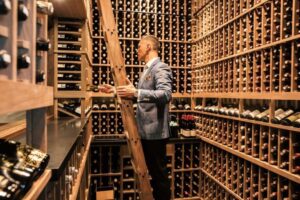
Launch Money
Q: What would you tell other sommeliers who might be fantasizing about opening their own places, especially about the capital investment they’ll need?
MS and RS: People who say they are going to give you money to open a restaurant don’t always pay up when pressed! Seriously, restaurant investment is generally not a lucrative endeavor and it’s filled with risk. We got lucky in that we found a great team of investors who understood our concept and got behind us as owner/operators. If you have an “angel” investor, great; but most will find that securing the funding to open your own place is a full-time job in and of itself, and you will hear “no” a lot more than “yes.” If you trust your concept and yourself, don’t get discouraged.
DK: Funding required us to have a fiercely strong belief in our own vision, especially when most investor candidates tried to discourage us. Many who had promised to support us, ultimately turned us down. I learned quickly that once you begin collecting funds, the pressure to close the funding starts building immediately since the clock starts ticking for partners who are eager to be repaid. The pressure can make you consider taking on partners that you may not have invited initially. Before accepting investment, it’s critical that there be mutual trust between both parties. You must be confident that potential partners believe in your vision and will trust you to execute your plan.
The single most important piece of the puzzle for me was having the right Chef/Partner by my side throughout the process. Chef Anthony Secviar and I worked together at The French Laundry for years and I trust him implicitly. I believe in his talent, his work ethic, and most importantly, his character. Pooling our knowledge and experience allowed us to push the envelope together and execute a far more ambitious concept than I ever could have by myself.
RF: Looking for financing/investors is never fun. Everyone understands that restaurants aren’t smart investments. Some people just want to be a part of something, but you’re basically asking them to believe in you, even though you aren’t going to be able to offer loads back in return. It’s not easy, it’s not fun, but it feels really satisfying when you do manage to scrounge up a handful of people who believe in you.
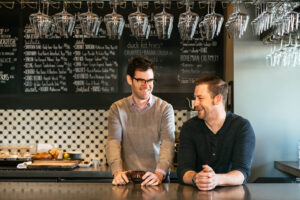
Q: How and where did you look for and find the money for your venture? Did your business plan predict your initial capital needs, or did it take more than expected?
MS and RS: We had a lot of unexpected things that came up during buildout and design. Construction costs are tough to predict and they will always be more than expected. Know your budget, and make sure there is a substantial amount in there to cover the unexpected things. Compromise on some of your wants if it helps you stay within a responsible budget. And don’t forget about working capital when you are thinking about opening costs. Even if you expect to be really busy from day 1, you never know what can happen! We opened in a construction site next to a behind-schedule hotel and there was a disastrous wildfire in Napa one month into our business. We’ve never seen 300 reservations evaporate quite so quickly! But we had working capital, and we understood how we could maintain operations even if our revenues were 50% of our projections. A nimble business plan that forecasts how to survive at low levels of business and how to exceed expectations at higher levels of business is essential.
DK:Writing a sound and comprehensive business plan was essential for us. Our business plan became our roadmap and we followed it religiously until we opened. Writing a detailed plan forced us to refine our concept and think through operational decisions in advance. It also allowed me to formulate my sales pitch and address objections confidently.
Raising the capital may have been the most challenging thing I’ve ever done. Building my professional credentials and personal relationships did help attract partnership interest. Ultimately, my reputation as a Master Sommelier and the Head Sommelier of The French Laundry went a long way to help secure funding for the restaurant.
We chose to sell equity in the business to private investors to raise capital for the business. Our capital investors now receive a preferred return until they are paid back in full through distributions.
RF: Chris and I had it slightly easier than some others. Opening our own place was a pipe dream. We expected we could manage some sort of pop up, with the hope that eventually someone (or lots of people) would help us fund a brick and mortar. A friend and fellow sommelier connected us to his friend who wanted to open a restaurant. So—Chris and I had an idea; the other guy had a strong business background and wanted to be part of a restaurant. We combined forces and came out on the other side of it with something in hand.
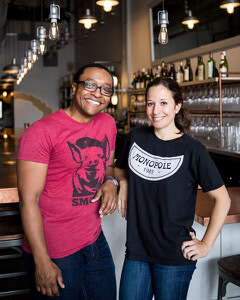
From dream to reality
Q: Day one. The doors are open. How did it go?
RF: We were so behind! We had anticipated we’d be open months earlier, but there were delays with construction and then it was such a struggle to schedule the inspectors to come in and sign off on things. When we had the last inspection, things moved quickly: we posted on Instagram, called in some employees, and opened up our doors to the public within hours. It was such a relief, but the timing was far from ideal. We opened a few days before Christmas, when the neighborhood had been nearly fully abandoned. It’s the one time of the year when you can park virtually anywhere in the Dogpatch. The first few days were slow and steady but very exciting.
MS and RS: We opened on a Friday night. At 4:30 that night our restaurant was still a construction zone. Literally! Our windows went in a week before. We were receiving wine that week to build the cellar but the cellar wasn’t completely finished. We didn’t put the final sealant coat on the concrete floor until a month later. Our last retail shelf had to go in three weeks after that. But the team came together, we borrowed some to-go containers from a restaurant down the street (you always forget something!) and we had a great service.
DK: Our goal from the beginning was to exceed the expectations of each and every guest who dined with us. You never get a second chance to make a first impression. In an effort to set ourselves up for success, we limited the number of reservations that we accepted during our first month, then gradually increased the cover count as we learned more about our restaurant and our team. This proved to be the right approach for us and prevented any meltdown scenarios.
We’re never truly satisfied, but we did go into the launch with reasonable expectations. Thankfully, the guest and media response has been extremely rewarding. Receiving a Michelin star right away was extremely helpful and introduced us to clientele outside of the Silicon Valley.
Q: How have things changed? Has your vision changed from the beginning? What’s new, different, or relatively the same?
RF: Things have changed and things have stayed exactly the same. There’s an ebb and flow to this sort of stuff. You figure things out as you go, and it seems like it was the way it was always supposed to be.
DK: The concept of offering two distinct dining experiences—the Lounge and the Dining Room—has been very successful and has helped define the identity of Protégé. The Lounge offers an à la carte menu in a casual atmosphere and the Dining Room features a 5-course tasting menu in a slightly more intimate setting.
Drawing from our experience at restaurants including The French Laundry, El Bulli, Akelarré, and Manresa, our ‘secret sauce’ is bringing the attention to detail found in the finest restaurants to a more approachable setting. Being that I’m on the dining room floor every night and that Chef Anthony is in the kitchen, we are able to apply this philosophy to our food, beverage, and service/hospitality—opposed to being strong in some areas and weaker in others.
The name of the restaurant is an homage to our own mentors, and our goal is to share our knowledge and experience with the next generation of restaurant professionals. An example of this is the deductive wine tasting class that I host every week for our team. During class, we focus on assessing wine structure accurately and recognizing ‘impact aromatics’ in order to create a deductive process of elimination. The idea is to teach them to be methodical blind tasters instead of relying on intuition.
Our biggest challenge has proven to be staffing. Offering just five dinner services per week means that we have one team and everyone works full-time. In the Silicon Valley, there are very few restaurant professionals and nearly everyone who works with us has relocated to join our team.
MS and RS: The concept is the same, and we’ve really tried to remain true to the original concept and attract staff that believes in it. The operation is in constant flux, though, and we are always trying to make things better. When you aren’t the umpteenth iteration of a corporate restaurant, you can’t do everything you want at the start. Wants and needs are important to distinguish, and you have to work responsibly within your own budget that you set for yourself. So we add things here and there as we can afford them. For instance, we finally got a water filtration system to produce house still and sparkling water, just over two years into business. And that holds true with the wine list too!
Mostly the “New” is events and classes that we host. The best way to keep moving is to challenge yourself to break the mold over and over. We have made some operational updates and concentrated on volume control in the dining room.
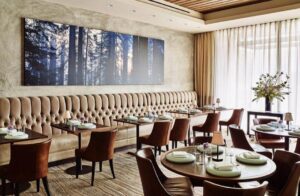
Glass and Plate
Q: With free reign over the wine list, what did you decide to focus on? How was managing your own list different than managing someone else’s?
MS and RS: We created a wine list that encompassed our local favorites and great wines from around the world. We want guests to be able to drink wines from just about any classic region in the winegrowing world, and to have some exciting stuff from more emergent places to discover too. And we wanted to do this with a $125,000 standing inventory.
We design it to be constantly in motion—some weeks we will add twenty wines and “86” twenty others. We have to focus on staff education and we also have to make sure staff is self-motivated to remain on top of the list, or we’re stuck with a bunch of wines no one understands and can’t sell.
We taste together, and we force ourselves to make good decisions and to defend our choices. Is this wine a good price? Does it fill a current need? Can we keep it in mind as a replacement for another SKU in the future? If we don’t agree on a wine, it’s up to us to make a case to the other partner as to why it deserves a spot on the list. We collectively keep the list well-crafted. On the other hand, we don’t have to ask our accountant if we can take our Raveneau allocation again this year! (Spoiler alert: we took it.)
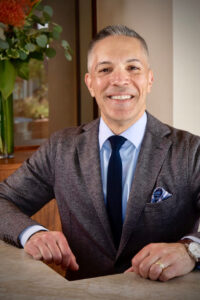
RF: Yes, we have full control over the wine list. We wanted to focus on high quality and small production wines, but also represent the wines of the world. We never wanted a huge list, and the hard part is in the editing. It’s easy to buy everything, but really hard to pick just one or two of something. To do this you need a strong palate, an understanding of your guests, and confidence. Between us we’ve had so much experience running other people’s programs. We learned from doing, and we’ve taken what we learned and applied it here.
We don’t have the budget that some other restaurants have—we don’t have the prettiest plates, or the most expensive anything, but we have managed to do a lot with our wine list without having a huge budget. It’s something we are both really proud of.
DK: My vision for the Protégé wine list was to offer wines that would highlight our cuisine and showcase the world’s most extraordinary producers—specifically from their finest vineyards and only from exceptional vintages. The idea was to accomplish all of this in a focused collection of just 250 wines, although the reality is that we now offer nearly 400 selections.
We specialize in French wine, although Italy, Spain, Germany, Austria, and the United States are also well-represented. Half-bottles comprise 25% of the Protégé wine list and help encourage couples to enjoy both red and white wine, without resorting to wine by-the-glass.
New World wines represent a very small portion of the Protégé wine list. Without the responsibility of representing a local wine region, we enjoy the freedom to offer the wines that we feel best represent our restaurant and support our cuisine. The result is that we sell an extraordinary amount of Burgundy and Bordeaux at Protégé.
Q: Which came first, the wine theme or the cuisine concepts? Was finding the right chef and food element harder or easier than expected?
MS and RS: The wine concept came first for us, but food followed shortly thereafter. We have been working with Chef Yancy Windsperger since day one, and we love his food. We gave him the challenge of composing a wine-friendly menu and he has responded magnificently! We’re less dogmatic about food-and-wine pairing at Compline. We don’t require you to drink or experience specific wines with specific dishes in order to enjoy the experience. We want wine pairing to be comfortable, easy, and enjoyable—not rigid and rule-driven.
DK: One of the first important decisions that we made was to offer Contemporary American cuisine in order to create a restaurant that was comfortable and recognizable. I’ve always believed that wine should highlight and support the food, ideally creating a symbiotic relationship that makes them better together.
Knowing how important the food would be, it was critical for me to have a chef/partner that I believed in. From the moment that I met Chef Anthony Secviar at The French Laundry in 2005, I knew that I needed to find a way to make him my partner in the restaurant. Chef Anthony and I have very similar management styles and a ‘blue-collar’ work ethic, possibly because we were both raised in the Midwest. We rose the ranks together at The French Laundry, and I believe that a mutual respect led to our business partnership.
RF: The hardest thing for us has been staffing the kitchen. San Francisco is SUCH an expensive city, and it’s easy for people to feel like they are drowning. (I have lived in NYC, Paris,bi and Honolulu, just for a frame of reference.) People cannot survive on hourly wages, even though we have the highest minimum wage in the country. So we pay more than that, which means we suffer. We have so few people on our staff, and our payroll still makes me feel sick to my stomach on a bimonthly basis.
Having the right leader in the kitchen has been even harder. We started with the sommeliers, and sought to find someone who could be our equal in the back of the house. That’s a tall order. Being an executive chef is a really big job, and it’s not for everyone. And Chris and I have powerful expectations. Our current executive chef is a woman, and she’s brought a strength to the kitchen that hasn’t been there before. Maybe that’s what everyone needs: #morewomeninpower.
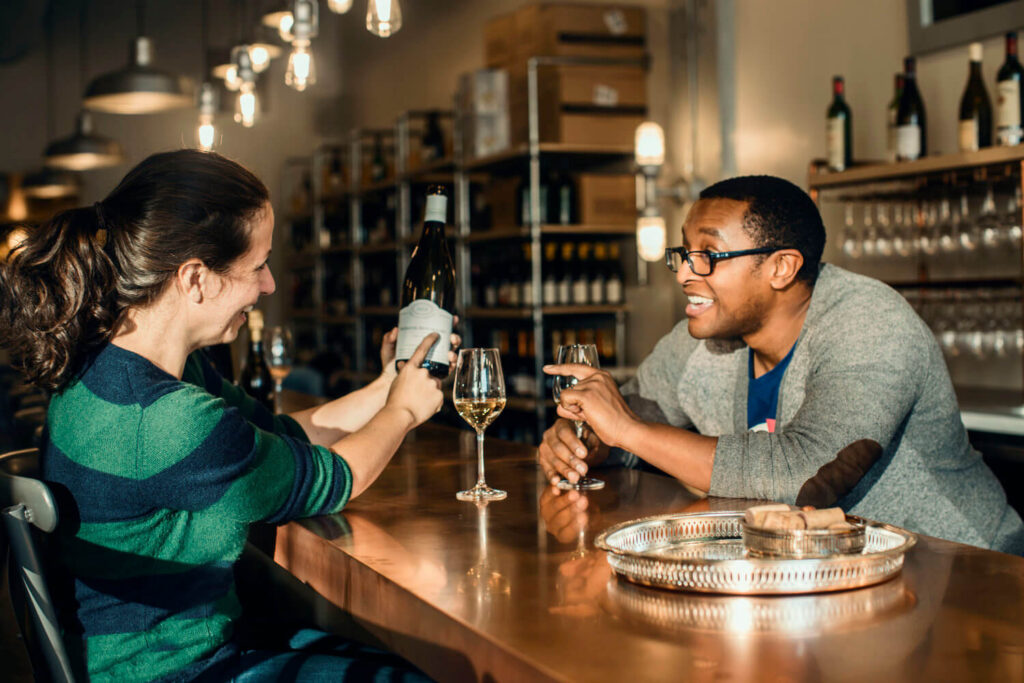
Lesson Learned
Q: What has opening a restaurant taught you about the business side of the food and drink industry? What advice would you give your younger self today—the self that was thinking about starting a restaurant.
DK: My advice for people thinking about starting a restaurant is to view your career as a training ground for your long-term success. Invest in yourself through personal study, learn everything you can from your colleagues and mentors, and focus on gaining knowledge and experience—as opposed to gaining credentials and titles.
I feel that the three most important attributes for any restaurant owner are self-discipline, humility, and a strong work ethic.
Self-discipline is an act of cultivation. It requires you to connect today’s actions to tomorrow’s results. There’s a season for sowing and a season for reaping. Self-discipline helps you know which is which.
Humility will help you to keep learning from colleagues and mentors regardless of how much knowledge and experience you acquire along the road. It means not becoming too proud to ask the questions you need to know in order to succeed.
A strong work ethic will support the continuous effort necessary to unlock your full potential and set the reference-point for your team.
RF: My younger self would be aghast at the prospect of opening her own restaurant. This was not the life I ever thought I would have chosen, but it’s the life I have. And to be frank, I wouldn’t want it any other way. Of course there have been challenges, and it’s been a learning experience for me too. This is the part I love about it. There’s never a dull moment, and there is no mindless repetition. I wanted something that would keep me sharp, keep me on my toes, and I got it. It is very much an extension of the work I did before as a manager/wine director/general manager, but it means a lot more since I have a stake in the success of the restaurant. What the future holds? Who knows, but—unless it’s the actual end of the world, it will not be the end of the world. The most important thing I ever did with my life was to have my child. After that I’d rank my husband, and then my friendships, and then the MS title, and then the restaurant. It’s important to keep things in perspective. That’s what most people do wrong.
MS and RS: Lead with hospitality—you have to have people want to come back. But also mind the details. Make sure you understand costs. Pay your vendors on time. Do a monthly inventory even if you don’t have a boss demanding it. Watch your labor costs. Dream up and execute events constantly. Running a restaurant is about a thousand little details, and if you manage them all correctly you can make a razor-thin margin and stay afloat. And have patience with all of it. Rome wasn’t built in a day.
